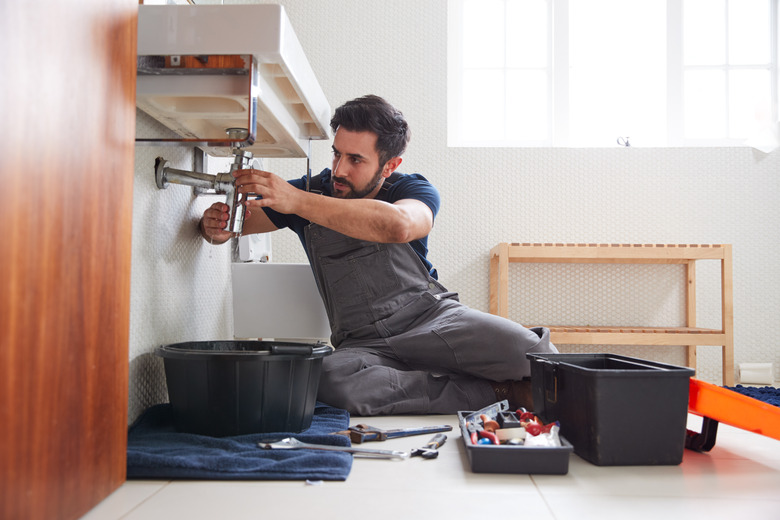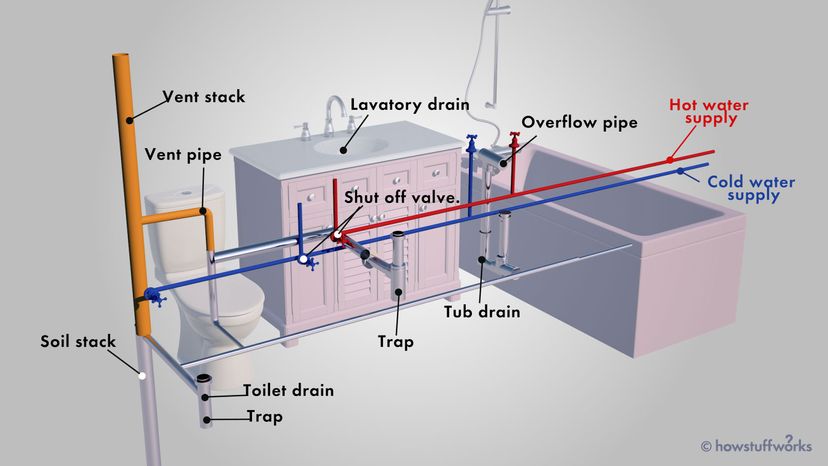The Purpose of Capped Copper Pipes in Shower Plumbing Systems
When working on bathroom renovations or repairs, homeowners often come across capped copper pipes behind walls, especially near shower valve assemblies. These pipes can raise questions about their function and whether they are necessary. Understanding their purpose is essential for anyone involved in plumbing repair, DIY home improvement, or bathroom remodeling.

Overview of Shower Plumbing Systems
A typical shower plumbing system consists of hot and cold water supply lines, a mixing valve, and outlets leading to the showerhead or bathtub spout. According to the International Plumbing Code (IPC) and Uniform Plumbing Code (UPC), which are widely adopted in the United States, plumbing systems must be designed to deliver safe, pressurized water while minimizing risks such as leaks, pressure fluctuations, and water hammer.
The two capped copper pipes highlighted in the image are not random or unnecessary. Instead, they are commonly used as air chambers or capped stub-outs designed to improve system performance and meet code requirements in some regions.
Air Chambers: Reducing Water Hammer
One of the primary purposes of capped vertical pipes in plumbing is to act as air chambers. Water hammer is a common phenomenon in plumbing systems where a sudden stop in water flow causes shock waves inside the pipes. This shock can result in loud banging noises, vibrations, and in severe cases, damage to fittings or joints.
How Air Chambers Work
-
When water suddenly stops, the momentum of moving water creates pressure spikes.
-
The capped vertical pipes, filled with air, act as cushions.
-
The trapped air compresses when shock waves occur, absorbing energy and reducing stress on the plumbing system.
The American Society of Plumbing Engineers (ASPE) notes that water hammer arrestors or air chambers are widely recommended in modern plumbing systems to prevent pipe damage and maintain quiet operation.
Maintenance of Air Chambers
Over time, air chambers can become waterlogged, reducing their effectiveness. This happens because air dissolves into water under pressure. While professional plumbers often prefer mechanical water hammer arrestors today, capped copper stub-outs remain common in many older homes.

Stub-Outs for Future Fixtures
Another reason capped copper pipes are installed is to serve as stub-outs for future plumbing connections. Builders often leave extra capped lines in walls to allow homeowners or contractors to add additional fixtures later without major demolition.
Common Uses for Stub-Outs
-
Future installation of shower heads, body sprays, or hand-held shower attachments.
-
Flexibility during bathroom remodels.
-
Compliance with custom or luxury plumbing design requirements.
According to the Plumbing-Heating-Cooling Contractors Association (PHCC), planning for future fixture additions during initial construction is cost-effective and saves significant time compared to retrofitting.

Code Compliance and Best Practices
Depending on the jurisdiction, plumbing codes may require methods to prevent water hammer or provide options for fixture expansion. The IPC (Section 604.9) specifically addresses water hammer control, recommending approved mechanical arrestors. However, traditional air chambers, such as capped copper pipes, are still seen in many installations.
It is important to note that while capped pipes are safe when properly installed, they must be soldered, pressure-tested, and secured to prevent leaks. The Copper Development Association (CDA) emphasizes the importance of proper installation techniques when working with copper pipes, including deburring, cleaning, and using lead-free solder.
Identifying the Capped Pipes in Your Wall
In the image provided, the two capped copper pipes are located above the shower mixing valve and extend vertically. Their characteristics suggest the following:
-
They are capped and not connected to fixtures.
-
Their vertical orientation is consistent with air chamber installation.
-
Their location near the shower valve indicates they are designed to absorb pressure shocks within the hot and cold supply lines.
This installation is consistent with standard plumbing practices in both residential and commercial settings.
Should You Remove or Replace Them?
Homeowners sometimes wonder whether these capped pipes should be removed, especially during renovations. The answer depends on the specific situation:
-
If they function as air chambers: They may still reduce water hammer. However, many plumbers recommend installing mechanical water hammer arrestors instead, as they are more reliable over time.
-
If they are stub-outs for future fixtures: It is best to leave them capped unless you plan to install new plumbing features.
-
During major renovations: Consulting a licensed plumber ensures compliance with local codes and helps determine whether modern solutions are preferable.
The National Association of Home Builders (NAHB) advises that any plumbing changes should be inspected and tested for leaks before walls are closed up.
DIY Considerations and Safety
While many homeowners are comfortable with minor plumbing tasks, working with copper pipes requires specialized tools and knowledge:
-
Soldering copper joints requires a propane torch, flux, and lead-free solder.
-
Pressure testing must be performed to confirm no leaks before closing walls.
-
Building code compliance is mandatory for safety and to protect home value.
Improper handling can lead to water damage, mold growth, or costly repairs. For this reason, the Environmental Protection Agency (EPA) and local building departments strongly recommend hiring licensed plumbers for major work.
Conclusion
The capped copper pipes visible in shower walls are not mistakes or unnecessary parts. They typically serve one of two purposes:
-
Air chambers to reduce water hammer and protect plumbing systems.
-
Stub-outs for future fixture installation, providing flexibility during renovations.
These pipes are part of standard plumbing practices, supported by guidelines from the IPC, UPC, ASPE, PHCC, and CDA. Their presence ensures system safety, future adaptability, and compliance with plumbing codes.
For homeowners undertaking DIY bathroom projects, it is important to recognize the role of these pipes and seek professional guidance before altering them. Properly installed and maintained, they help ensure reliable and efficient operation of household plumbing systems.

